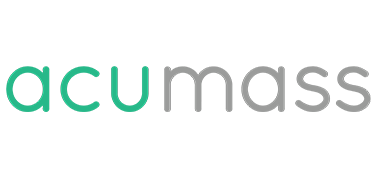
03 Sep Submitting a European Patent Application.
Transparency with regards to the world of intellectual property is a pretty new priority. In the past decade we’ve taken great strides towards making the (sometimes complicated) nature of intellectual property an easy one for people who aren’t IP attorneys to comprehend, we’re not quite there yet but we’re certainly getting better. The combination of E- commerce growth and a D.I.Y generation of successful businesses booming in tandem the world over has created a demand for legislative reform across the board and has highlighted the weaknesses of the existing IP protections in place. The whole purpose of IP is to protect innovation, protect the inventor and their design – with that in mind, it’s disheartening to hear so many bright and talented inventors ask basic questions about accessing their own rights to protection or what those rights might be.
Late last year Acumass blogged about our experience attending the Web Summit in Dublin, Ireland; over the course of three days we manned our booth meeting with clients and discussing what it is exactly we do with those looking to outsource the renewal payments of their own IP portfolios but we weren’t prepared for how eager the young inventors there were to educate themselves on their legal rights when it came to protecting their inventions, we even heard an account of a Start Up which had to throw in the towel when a big company applied their unprotected invention to their own work unashamedly. We recognised the lack of easy to digest, simplified and effective IP initiatives being offered to new creators to educate them on their options and we foresee the massive implications of that neglect.
We have decided to take the simplified information we often share with people requesting advise about making European Patent applications (specifically) and compile this go-to run down.
What is a Patent?
A patent is an industrial property grant given to the inventor of a unique invention (product, process, apparatus), it protects the inventor from having their patented invention exploited by a third party. In order for an invention to be deemed ‘patentable’ it needs to be inventive, new and industrially applicable – Inventors submit their patent applications to regional or national patent offices.
What is a Trademark?
A trademark is a distinguishable identifier which businesses rely on to separate themselves from competitors. (e.g. designs, logos, letters, numerals or the shape of goods/their packaging)
What is a Design?
A design protects the appearance of a product, the shape, the colour, the contours, texture etc.
Renewal payments/Acumass services:
Renewal fees are something which patent holders pay to maintain the ownership of their patent ownership. Renewal fees and renewal dates are for different amounts due on different dates depending on where you are in the world; for a company/individual with an expansive portfolio of patents, meeting renewal different renewal dates and calculating different amounts in different currencies can often be too much to manage – Acumass takes responsibility for our client’s renewals by managing their portfolio, watching their due dates and making payments on client’s behalf or simply sending them reminders to do so themselves. The patent holder is expected to pay their first renewal fee on the second anniversary of the filing date for the year ahead and every renewal after that covers the following year over the course of the patent’s lifespan.
How do I make an application?
First, you want to do a patent search. Gene Quinn wrote a very detailed article on this topic for IPWatchdog.com – you can read his article here. It is advised that all applicants seek legal advise before submitting their application simply because there are many options and your best course of action depends on your intention (e.g which countries you want to effect your patent within, what industry your patent will be active within etc.) Visit the European Patent Office website and read through their breakdown of steps which will be necessary to take when making an application: www.epo.org
What language can I make my application in?
When making a European patent application, the official languages accepted by the EPO are English, German and French, your application must include a translation into one of these languages.
What information do I need to file an application for examination?
When filing an application for a European patent, you will be asked to supply applicant information, a detailed description of your invention, a run down of claims associated with the invention (claims define the limits of exactly what the patent does, and does not, cover. That is, the patentee has the right to exclude others from making, using or selling, only those things which are described by the claims.) Once your application is received, formalities begin, you will be expected to submit additional information such as drawings, translations and application fees, the inventor will be officially designated and a professional representative appointed.
What can I expect once I’ve submitted an application?
Following the examination of your application, a European search report will be conducted using the information you have provided (claims, drawings etc.) You will personally receive the findings of this report and learn whether or not your application meets the necessary requirements to continue. Your application will be published alongside the report findings 18 months after your filing date, you then have six months to decide whether or not you want to proceed. If you decide to proceed, your application is then examined once again by an objective panel and the decision as to whether or not it should be granted is made.
What is validation?
Once an invention is granted a patent by the EPO, it may be necessary to make validations to maximise security. A European patent is effectively a number of patents all rolled up into one and so, you must validate your patent in every nation of the E.U you want it active within. This can sometimes result in additional fees depending on the countries selected by you.
It is always advisable that you seek legal advise from an IP attorney before embarking on your application, they have a wealth of knowledge which you can benefit from.


